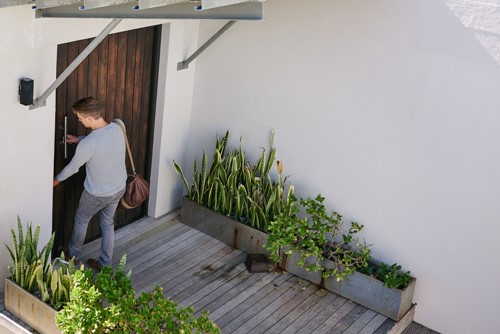
Photo by NakoPhotography via Shutterstock
Whether to protect your belongings when you’re not home or to protect your loved ones when they are, you might consider a security system. Burglars are getting smarter, and your home should follow suit. One way to improve your home’s security is by installing a smart lock.
In general, there are two categories of smart locks: (1) those that replace your traditional bolt lock entirely, and (2) those that install over the top of your existing door lock system. When you replace your current lock with a completely new locking mechanism, the device changes the appearance of your door handle on both front and back. When you use a retrofitting lock, it typically keeps the appearance of your traditional door handle. This distinction is crucial if you have a specific aesthetic you need to follow.
The idea of electronic, wireless entry with remote identification is excellent. However, technological advancement does have its issues. For example, if your Bluetooth or wireless connection is blocked, your lock could end up keeping both you and intruders out of your home. Insist on a system that offers an alternative to wireless entry such as a key fob, keypad, fingerprint reader or self-powered touchscreen.
Here is an abbreviated list of other features to look for in a smart lock system for your home:
If you’ve retrofitted your home’s lock, let your agent know to promote your home’s smart features when you sell it.

Teresa Garcia knows buying a home isn’t just a financial decision. It’s a personal one, too. After all, your home is your refuge from the world. The place families are raised and life’s most important moments are shared. For Teresa, helping clients find the perfect property is more than a career – it’s a calling. From your first look to closing, she’s with you every step of the way, with a keen eye for detail and a warm personality to match.